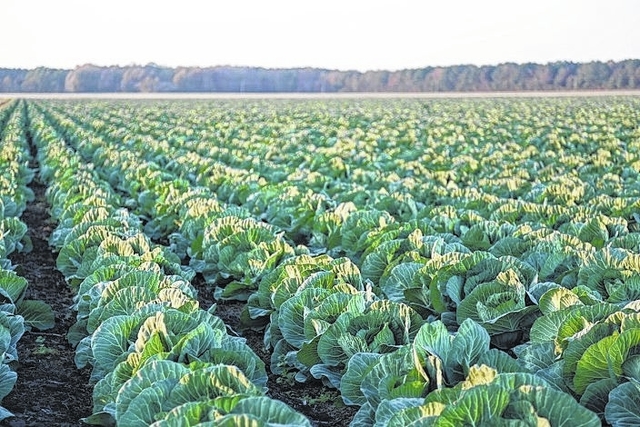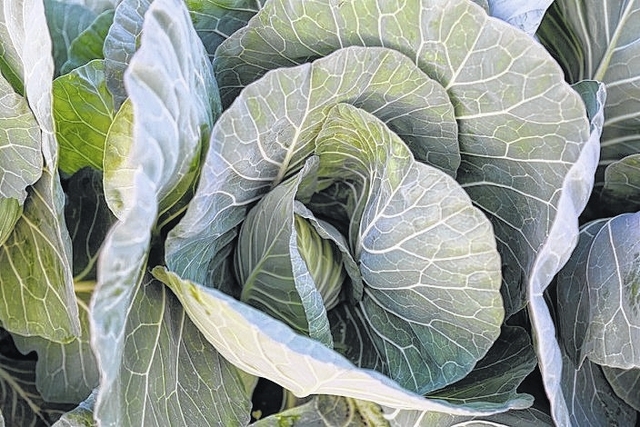Rows and rows of fresh cabbage can be seen in this field, a crop that is often grown in both spring and fall in eastern North Carolina. Statistics from the NC Cooperative Extension Service show that an estimated 313 acres of cabbage is grown in Sampson County, producing over 78,000 heads of the green, leafy vegetable.Cabbage is grown commercially in eastern North Carolina as both a spring and fall crop, and in the mountains as an early summer and fall crop. Cabbage acreage in North Carolina averages 10,000 to 12,000 acres. The biggest problem in growing this crop is insect control.
Rows and rows of fresh cabbage can be seen in this field, a crop that is often grown in both spring and fall in eastern North Carolina. Statistics from the NC Cooperative Extension Service show that an estimated 313 acres of cabbage is grown in Sampson County, producing over 78,000 heads of the green, leafy vegetable.Cabbage is grown commercially in eastern North Carolina as both a spring and fall crop, and in the mountains as an early summer and fall crop. Cabbage acreage in North Carolina averages 10,000 to 12,000 acres. The biggest problem in growing this crop is insect control.

Rows and rows of fresh cabbage can be seen in this field, a crop that is often grown in both spring and fall in eastern North Carolina. Statistics from the NC Cooperative Extension Service show that an estimated 313 acres of cabbage is grown in Sampson County, producing over 78,000 heads of the green, leafy vegetable.Cabbage is grown commercially in eastern North Carolina as both a spring and fall crop, and in the mountains as an early summer and fall crop. Cabbage acreage in North Carolina averages 10,000 to 12,000 acres. The biggest problem in growing this crop is insect control.

Rows and rows of fresh cabbage can be seen in this field, a crop that is often grown in both spring and fall in eastern North Carolina. Statistics from the NC Cooperative Extension Service show that an estimated 313 acres of cabbage is grown in Sampson County, producing over 78,000 heads of the green, leafy vegetable.Cabbage is grown commercially in eastern North Carolina as both a spring and fall crop, and in the mountains as an early summer and fall crop. Cabbage acreage in North Carolina averages 10,000 to 12,000 acres. The biggest problem in growing this crop is insect control.


